With Valencia drenched in August sweat, I’ve been dreaming about cool mountain air and reliving our May road trip through the wild, high Pyrenees.
Early May is gloriously empty in the mountains. Ski season is over, the summer outdoor-sports crowds haven’t arrived, and the hospitality industry goes into standby mode. On the slopes and in the meadows, the drizzly spring weather is urging the landscape back to life.
Despite the between-season shutdown, we managed to eat all the region’s greatest hits: Broto beef, venison stew, slews of sausages, and Trinxat, a robust mash of cabbage, potatoes, pancetta and blood sausage. It’s the Pyrenees cousin of colcannon and bubble and squeak.
Planning the 10-day route (about 1,500km from Valencia and back) to get a good feel for the region took a bit of legwork, so I hope this mini-guide will be helpful for anyone eyeing this rugged part of northern Spain. I’d also recommend reading Savage Frontier by Matthew Carr to get the full history of this fractious border region.
Together in Electric Dreams
We spaced out our bases like so: Olot (Garrotxa Natural Volcanic Park) → Alp (Cerdanya Valley) →La Seu D’Urgell → Vielha (Aran Valley) → Lanuza (Tena Valley) → Huesca.
It involved looping up and down valleys and tackling twisty mountain roads, and allowed stops for balloon rides, cheese tastings, poking about in the woods and splashing in hot springs.
This was our first road trip in an all-electric car and I became a total battery bore, obsessively monitoring how it was draining on steep roads and and regaining charge on the downhills.
We needed seven different apps for charging stations, but the real frustration was that finding a charger on the Electromaps app didn’t mean it would be operational. Only 11 out of the 22 we drove to were usable. The others were out of commission for a variety of reasons: locked in the backyard of a shuttered hotel or a gated industrial estate, or not hooked up to the grid at all.
Long story short, Spain’s charging network is still patchy AF.
Olot: Extinct volcanoes and a humongous cathedral
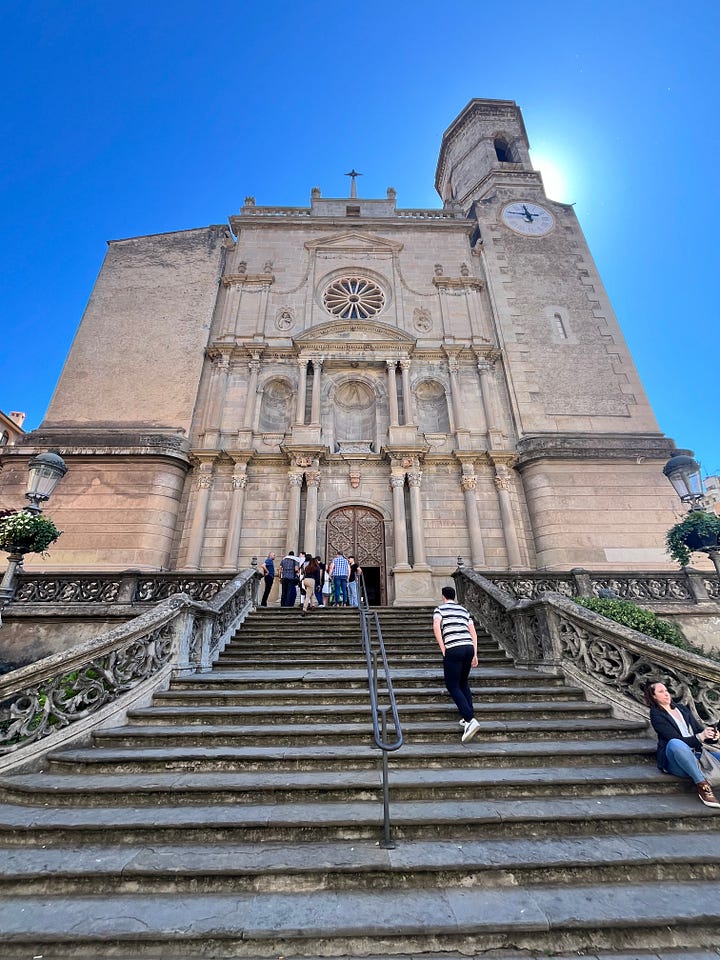
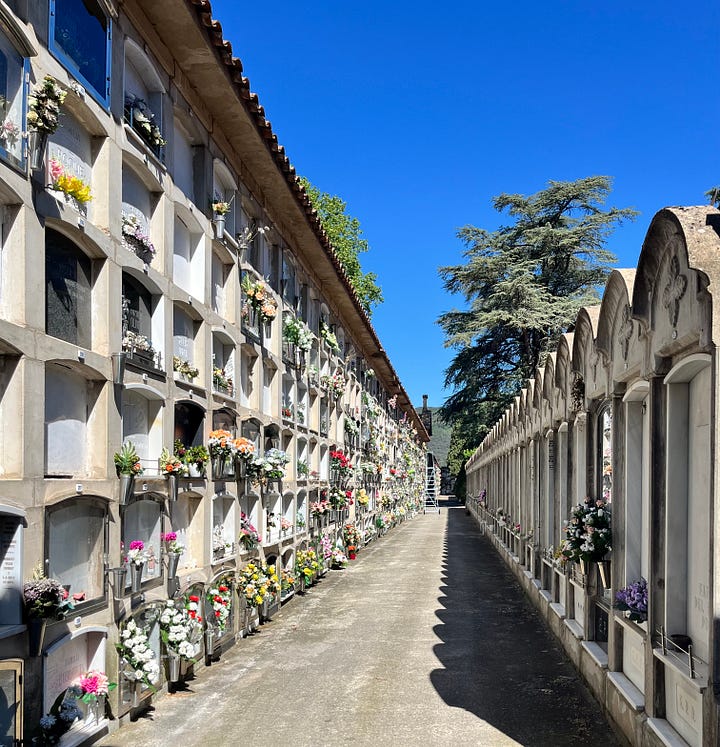
We started our meandering in the cathedral town of Olot in the Garrotxa Volcanic Park. There’s also the extinct volcano in the town itself. Go round the back of the bullring and through the municipal cemetery to walk up the side of the volcano to the crater. Once there, you can clamber up an old watchtower for a panorama of the volcanic park and plains.
Sleep: Can Passerells, near the village of San Vincenç de Torelló outside Olot, is a sweet, family-owned finca in a lush garden that has been diligently renovated to preserve original details like the wood-panelled bedrooms and sweeping staircase .
Alp: High in the Cerdanya Valley
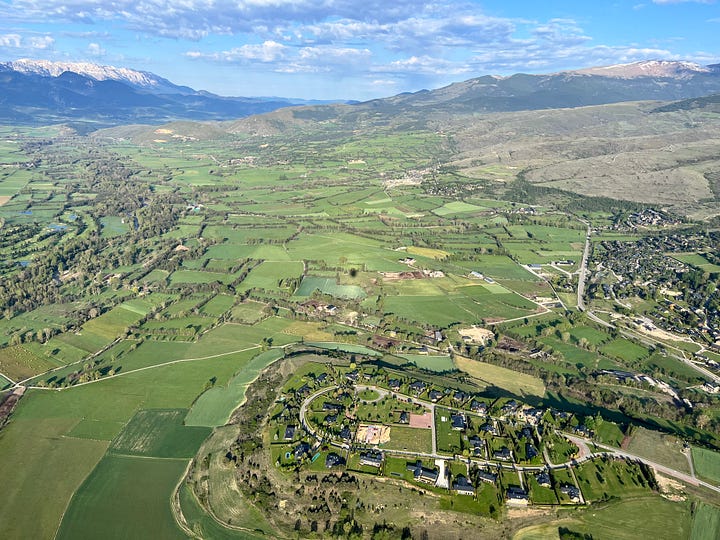
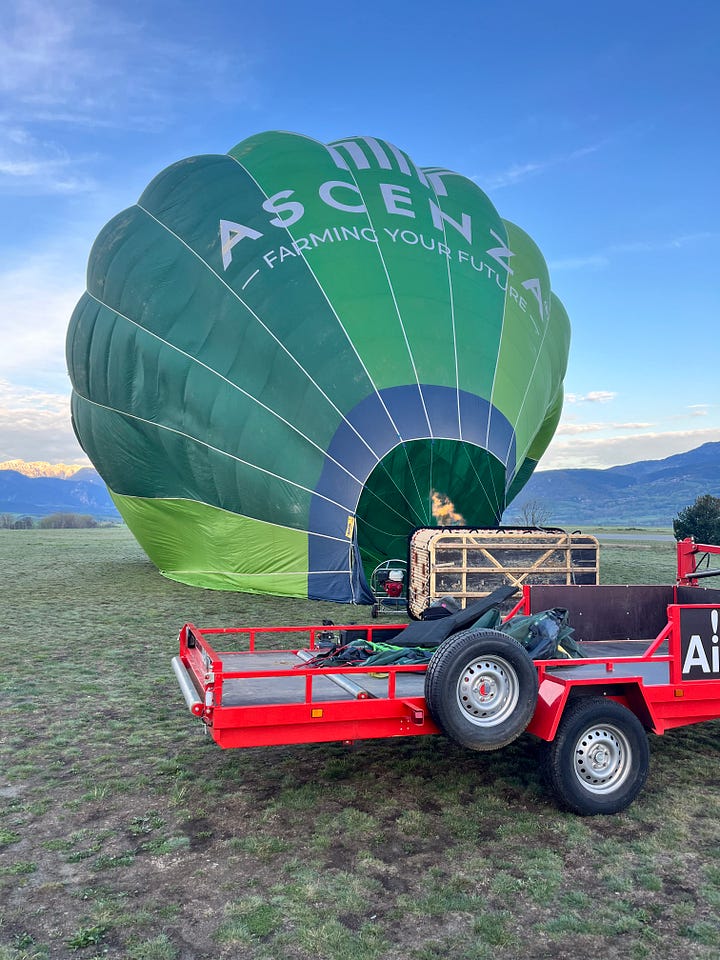
The town of Alp is all about skiing and action sports. We were the only guests at the hotel, apart from a Lycra-clad gent keen to tell me about his high-altitude cycling feats. Our only mission was to be down at the airstrip for 6am to board the hot air balloon with 8 others and drift in tranquil silence over the green bowl of Val de Cerdanya — blissful.
La Seu d’Urgell: Cheese Central
It’s worth a whizz into Andorra from Alp. It's wild and ravishing, once you pass the grubby border bit with tax-free hypermarkets and a random track with guys doing donuts in souped-up cars.
A few hours later, we’d passed through Andorra la Vella and back into Spain down to La Seu d'Urgell, home of the annual Sant Ermengol cheese festival. I’d had no luck finding a cheese tour at short notice, so I was gleeful when the cheese master himself, Salvador Maura, said we could visit his Mas D’Eroles quesería. More about my surprise cheese tutorial in this earlier post.
Stay: I love Spain’s state-owned Parador hotels network of converted monasteries, convents and other historical buildings. The Parador de La Seu d’Urgell next to the Santa Maria cathedral is a prime example of how to integrate a stylish hotel within the original bones of a cloister.
There are numerous villages to check out en route from La Seu to Vielha. We dipped into the climbing-kayaking town of Sort, nosed through the Disney-pretty village of Esterri D’Àneu road, and climbed to 2,000m at La Bonaigua de Baix.
Vielha: Proper-town vibes
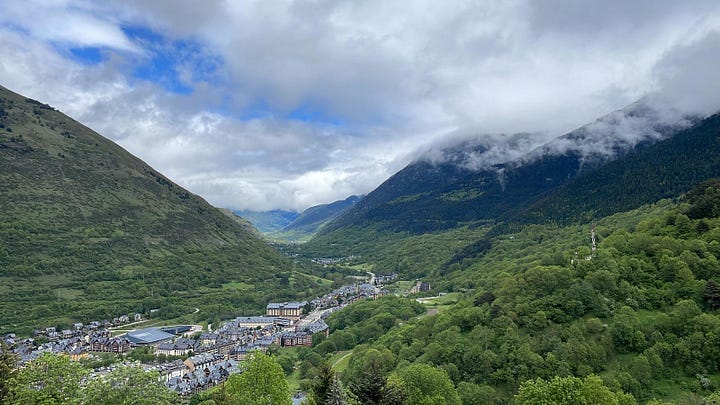

Vielha is not as glitzy as the famous, fancier Baqueira Beret, where the Spanish royal family skis, but I much preferred this town’s alpine, real town feel.
Although it rained nonstop during our two days here, we managed some snuffling around in the woods. Many trails start from the teeny village of Tredós, including a witch themed walk with life-sized coffins and a spooky cottage.
In and around Vielha we checked out Gessa, Baqueira, Tredós, Salhardu and Ainsa. At this point, I was starting to get cute-village overload.
Eth Corner restaurant in Vielha was so good we went twice for their home-made pork pate, game stew and venison carpaccio with Bagergue cheese. And more Trinxat to buoy us up for clumping about in the rain.
Stay: The Parador de Vielha, which hovers above the town on the crown of a hill, has a sort of 70s vibe from the outside and great views down the entire valley.
Lanuza: A survivor story, Panticosa spa and Canfranc station
Our last mountain stop was Lanuza, a hamlet of about 50 people teetering on the edge of the Lanuza reservoir. In the 1960s, the village and land was expropriated to build the reservoir and everyone had been moved out by the late 70s. In the 90s, some families won a legal battle to get their land back and started rebuilding the small clutch of houses and the ancient church that had not been flooded by the dam.
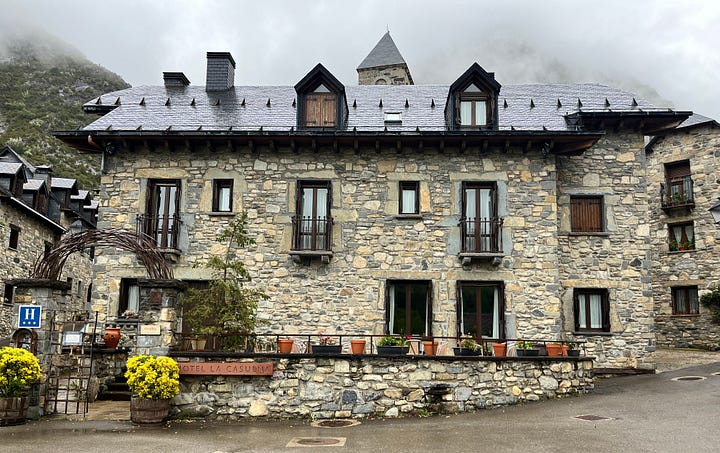
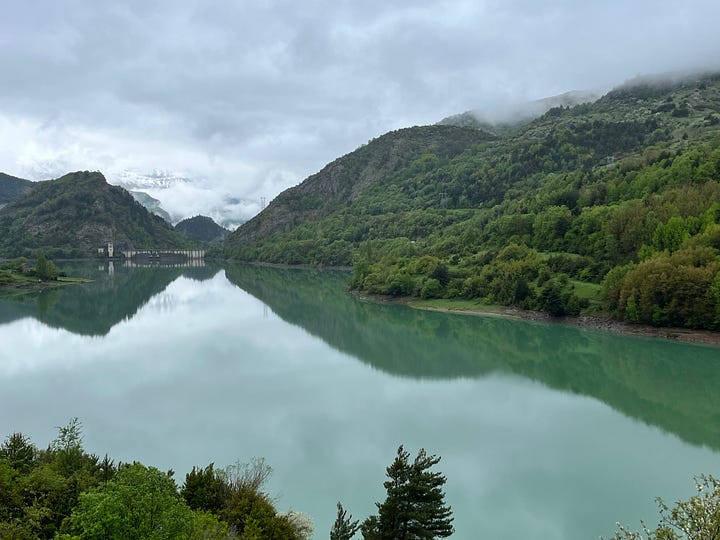
The town of Gallent is well worth the 30 minute walk from Lanuza. The Balneario de Panticosa mountain spa is just a 45 minute drive up a hair-raising road, and Canfranc station is about an hour away. I wrote about these two places here.
Stay: Hotel La Casueña on the edge of the water is the only one in the village and full of local art and books and big sofas The fiercely friendly owners mollycoddled us with attention and the most amazing home-made meals.
Torla-Ordesa: a dazzling finale
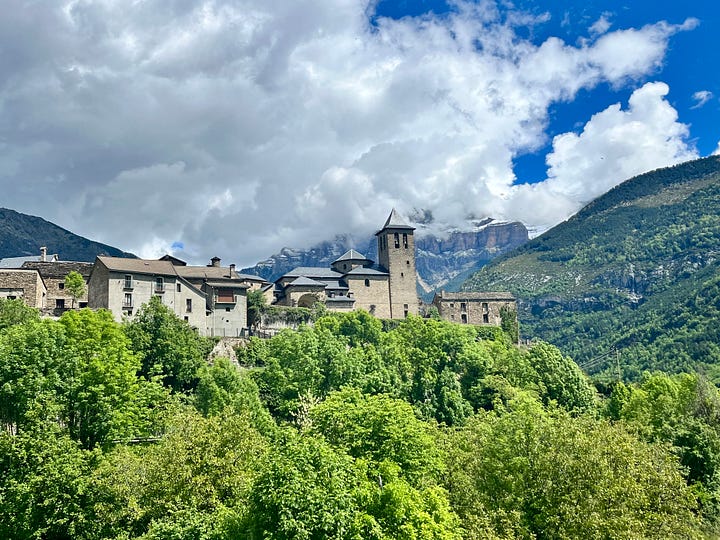
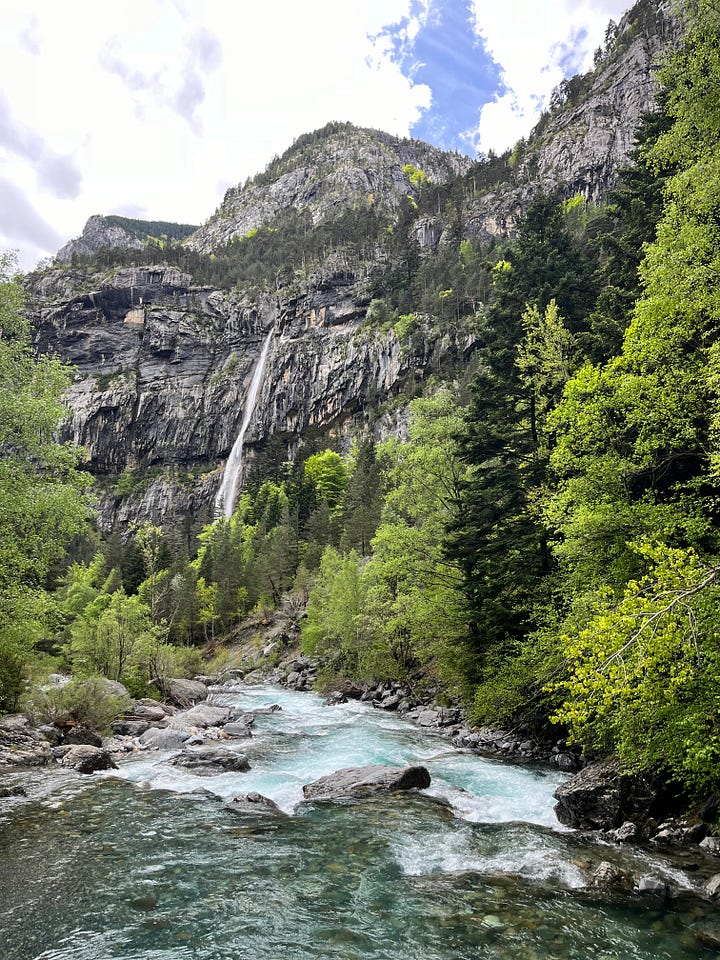
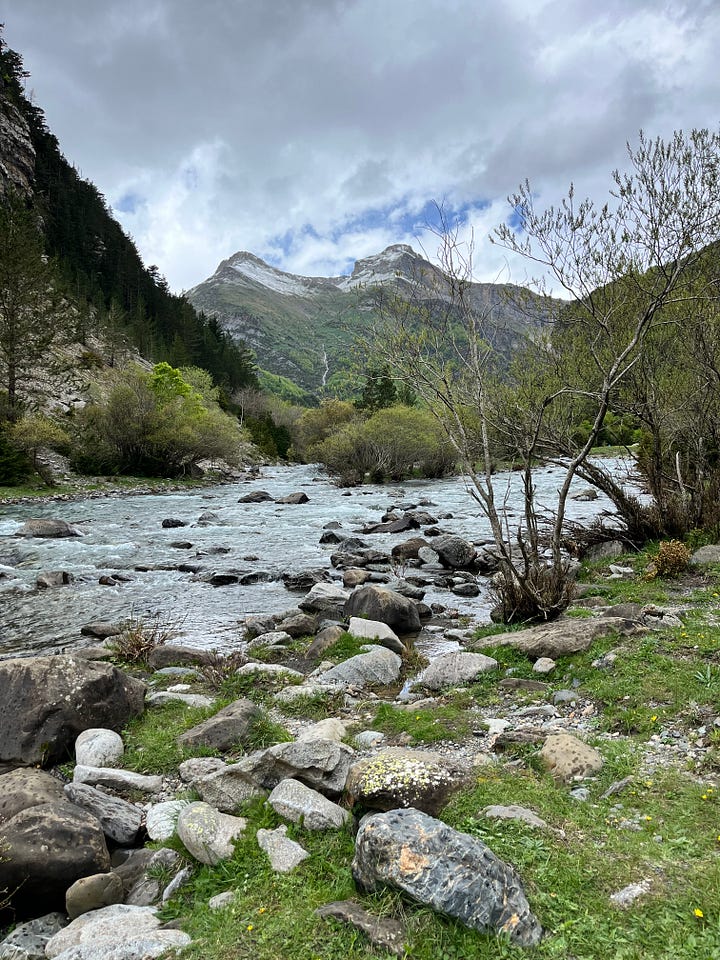
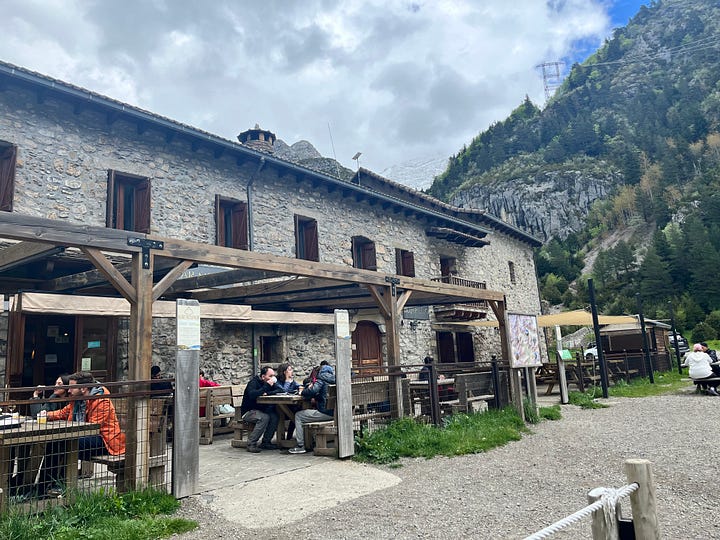
We debated if we should loop back to Torla-Ordesa from Lanuza and I’m so glad we did as it was a dazzling finale to road trip. The impossibly photogenic village with its dramatic mountain backdrop is the gateway to the Ordesa y Monte Perdido national park .
This is proper hiking country, part of the GR11 hiking route that goes 800km from the Cantabrian Sea to the Mediterranean. They limit entry to the park and we were turned off left at the entrance, a lucky diversion that led us into the Bujaruelo Valley along a skinny track walled by rocks, waterfalls, and a wild river. The Refugio Bujaruelo, with hot stoves and Broto steaks, is the perfect start or end to whatever you’re doing.
Huesca: All the Sanchos
I kept reading that the town of Huesca was amazing, but maybe I’d been too dizzied by snowy peaks and hairpin bends to appreciate it properly, so I think it needs another visit.
My highlight was Loarre Castle outside of town. King Sancho the Great built a tower here in the 11th century after taking the area from the Muslims, then King Sancho Ramírez constructed it into the impressive fortress it remains today.
In keeping with the mediaeval theme, we slept at Castillo de Corvinos, a 9th century castle exquisitely restored by owners Borja and Luis. Sancho Ramírez of Aragon also conquered this place at the Battle of the Oscense plains and it was one of the bases for the Aragonese army during their 13 year siege of Huesa. The king of that castle is a massive Pyrenees Mastiff, called Sancho naturally, who just wanted a slobbery cuddle.

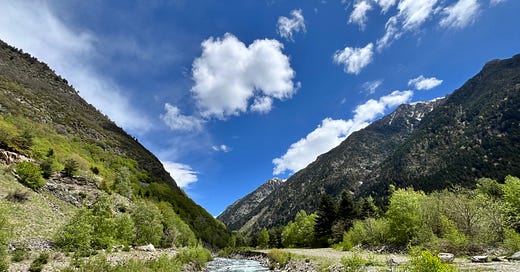



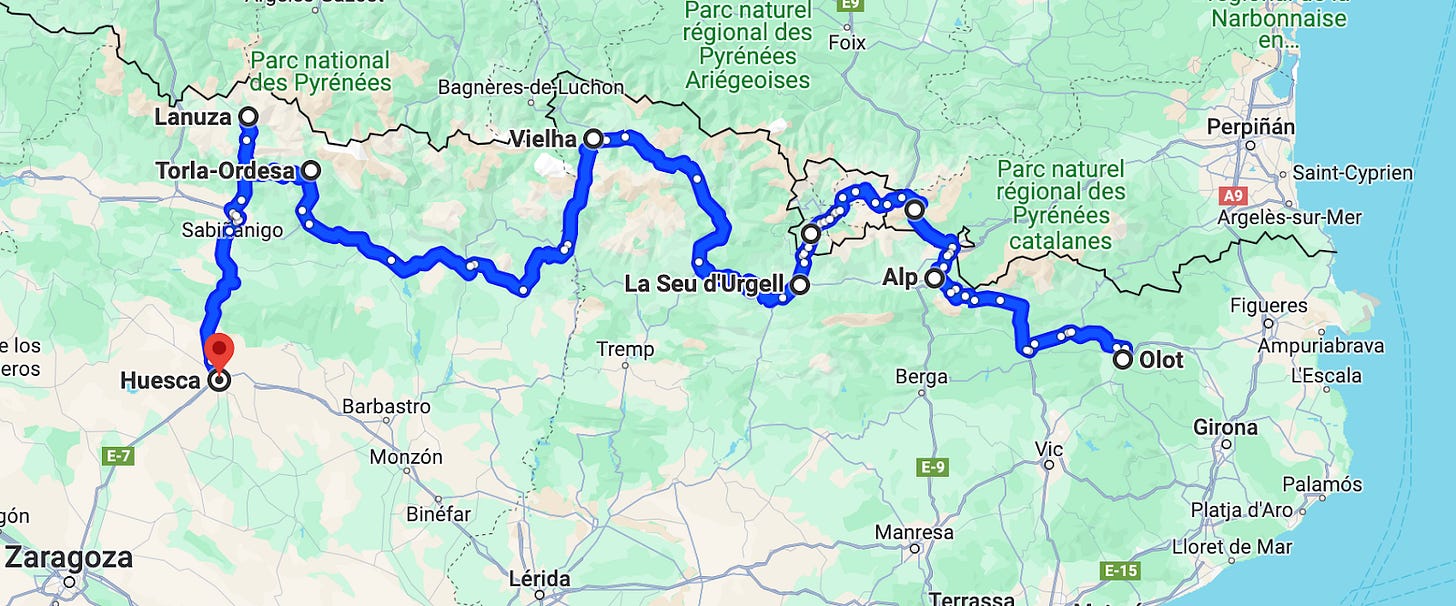
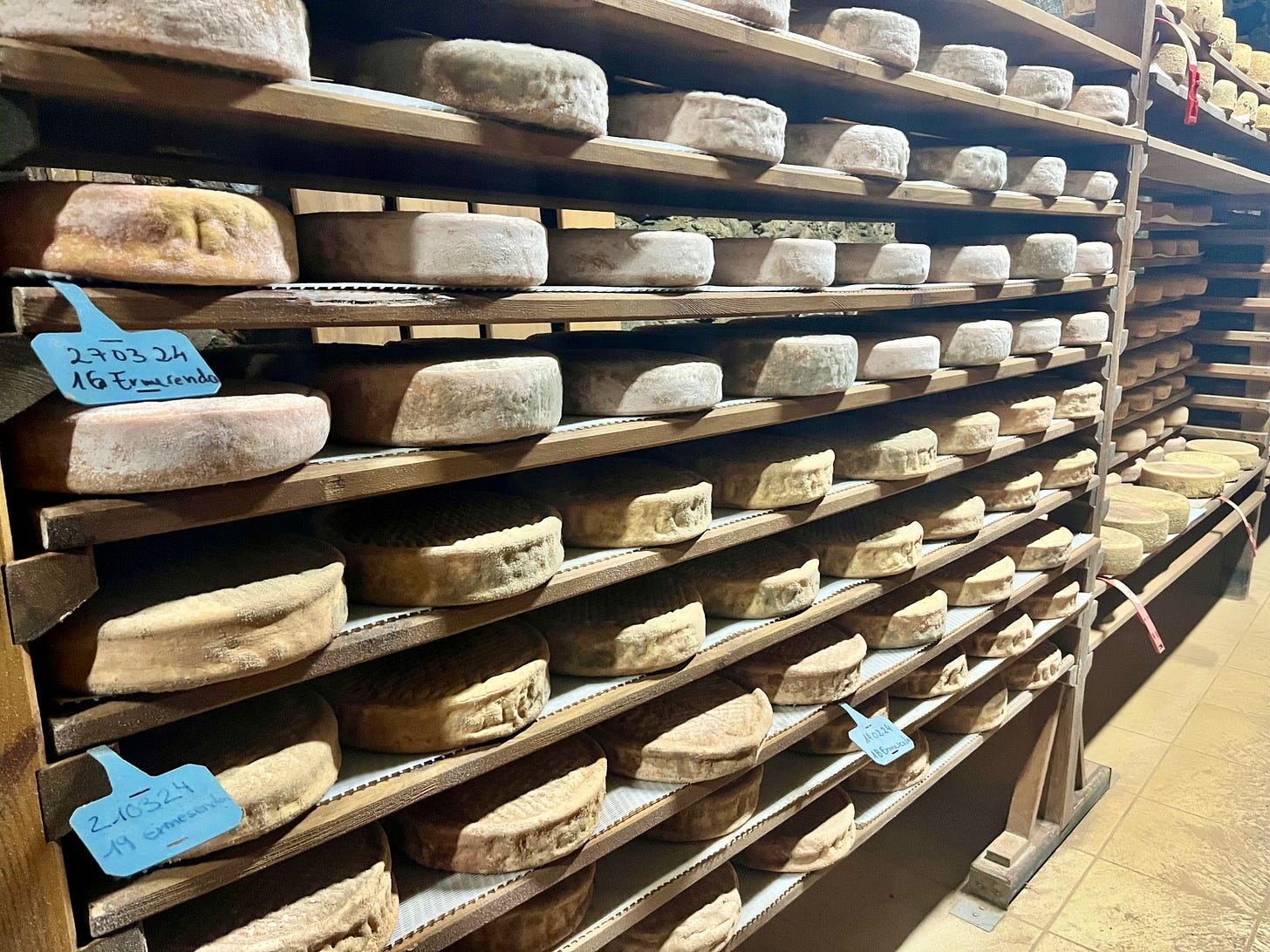
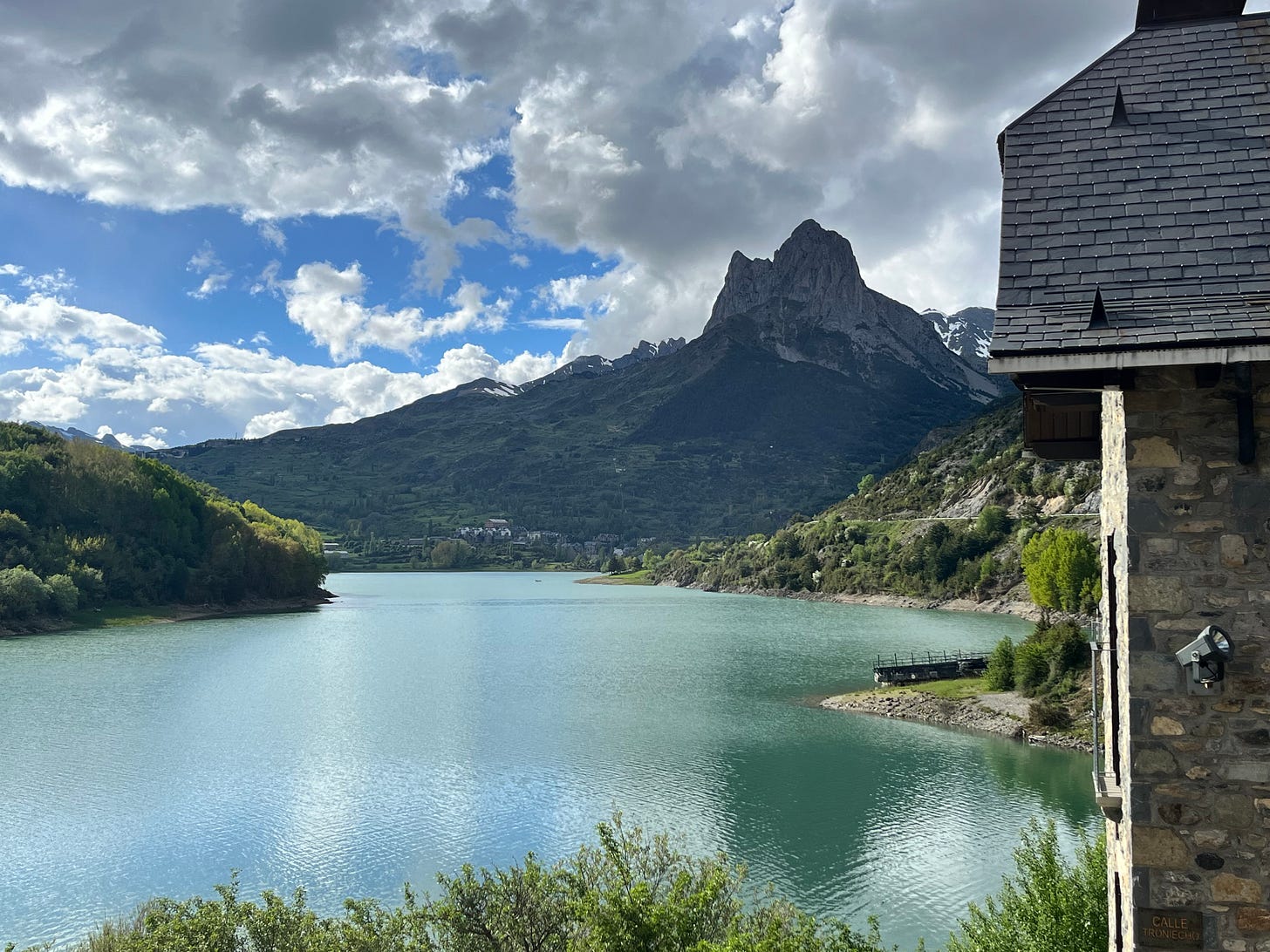
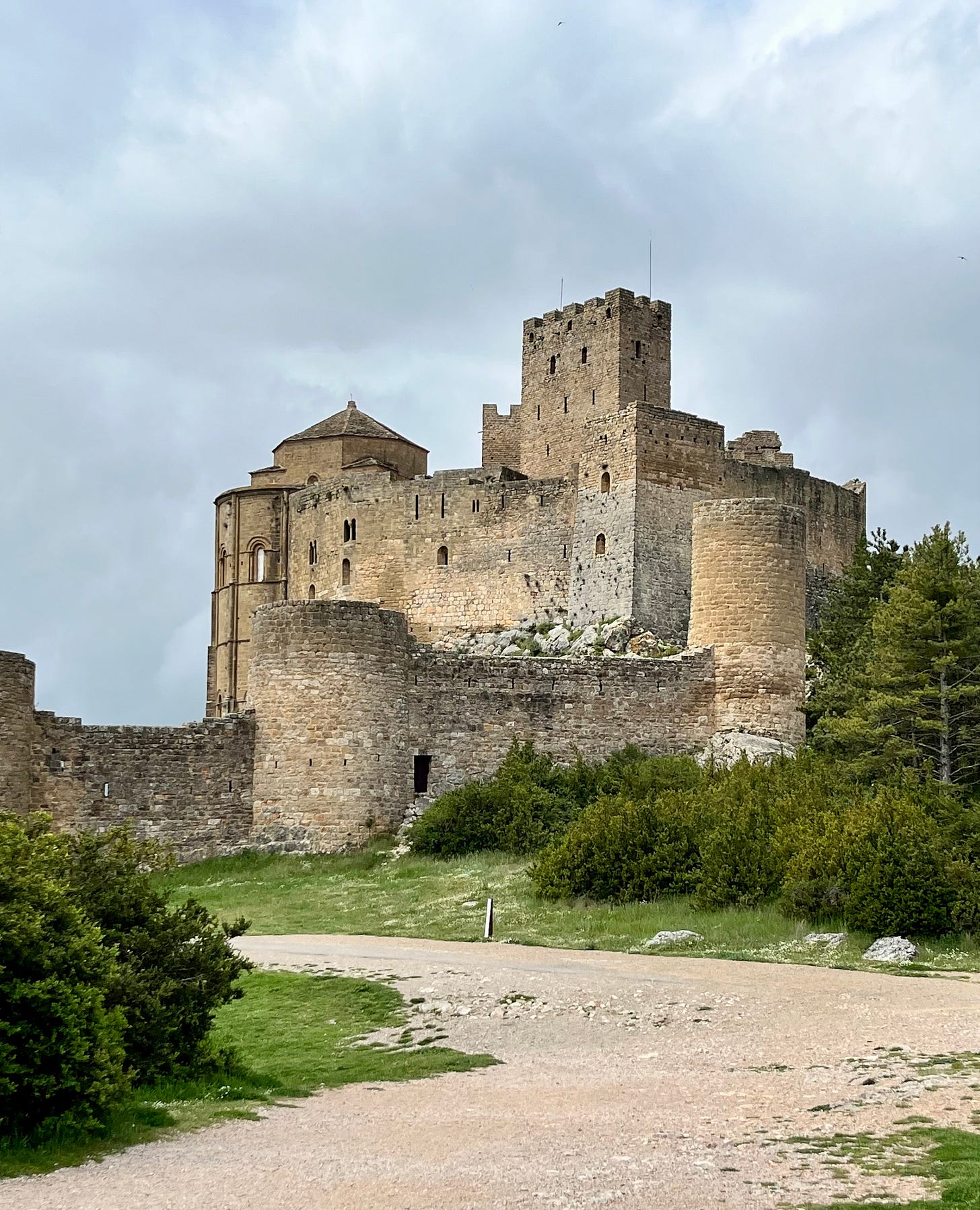

Great post, brings back good memories of hiking in Ordesa y Monte Perdido. I love that area of Spain, and super interesting that you were able to do the trip in an electric car, despite the frustrations!
I didn’t know you did this in an electric car! Thanks for the round up, sounds like a dreamy trip